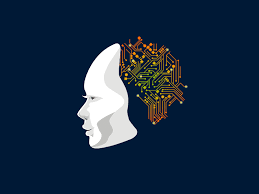Source: analyticsinsight.net
The promise of deep learning in the field of computer vision is better performance by models that may require more data however, less digital sign preparing ability to train and work. There is a ton of promotion and large claims around deep learning methods, however, past the hype, deep learning techniques are accomplishing cutting edge results on challenging issues. Outstandingly, on computer vision tasks, for example, image classification, object recognition, and face detection. Deep learning strategies are well known, principally in light of the fact that they are delivering on their promise.
This isn’t to imply that there is no publicity around the innovation, however, that the hype depends on genuine outcomes that are being exhibited over a suite of challenging artificial intelligence issues from computer vision and natural language processing.
Some of the principal large demonstrations of the power of deep learning were in computer vision, explicitly image recognition. All the more as of late in object detection and face recognition.
Among the most noticeable factors that added to the enormous boost in deep learning is the presence of large, high-quality, publicly available labelled datasets, alongside the empowerment of parallel GPU computing, which enabled the transition from CPU-based to GPU-based training in this way taking into account huge speeding up in deep models’ training.
Extra factors may have played a lesser job also, for example, the alleviation of the vanishing gradient problem owing to the disengagement from saturating activation functions (such as hyperbolic tangent and the logistic function), the proposal of new regularization techniques (e.g., dropout, batch normalization, and data augmentation), and the appearance of powerful frameworks like TensorFlow, theano, and mxnet, which allow for faster prototyping.
Before getting too amped up for progress in computer vision, it’s imperative to comprehend the constraints of current AI technologies. While enhancements are critical, we are still a long way from having computer vision algorithms that can understand photographs and videos similarly as people do.
Until further notice, deep neural networks, the fundamentals of computer vision frameworks, are truly adept at coordinating trends at the pixel level. They’re especially productive at classifying images and localizing objects in images. Yet, with regards to understanding the context of visual data and depicting the connection between various articles, they flop wretchedly.
Recent work done in the field shows the constraints of computer vision algorithms and the requirement for new assessment techniques. In any case, the present utilization of computer vision shows what amount can be cultivated with pattern matching alone.
A significant focus of study in the field of computer vision is on systems to recognize and remove highlights from digital pictures. Extracted features context for inference about an image, and often the more extravagant the highlights, the better the derivation.
Sophisticated hand-designed features, for example, scale-invariant feature transform (SIFT), Gabor filters, and histogram of oriented gradients (HOG) have been the focus of computer vision for feature extraction for some time, and have seen good success.
The promise of deep learning is that mind boggling and valuable highlights can be consequently gained legitimately from large image datasets. All the more explicitly, that a deep hierarchy of rich features can be taken in and consequently extricated from images, given by the numerous deep layers of neural network models.
Deep neural network models are delivering on this promise, most strikingly exhibited by the change away from sophisticated hand-crafted feature detection methods such as SIFT toward deep convolutional neural networks on standard computer vision benchmark datasets and competitions, such as the ImageNet Large Scale Visual Recognition Competition (ILSVRC).
Until not long ago, facial recognition was an awkward and costly innovation constrained to police research labs. However, as of late, because of advances in computer vision algorithms, facial recognition has discovered its way into different computing gadgets.
iPhone X introduced FaceID, a validation framework that utilizes an on-device neural network to open the telephone when it sees its owner’s face. During setup, FaceID trains its AI model on the face of the owner and works modestly under various lighting conditions, facial hair, hair styles, caps, and glasses. In China, numerous stores are presently utilizing facial recognition innovation to give a smoother payment experience to customers (at the cost of their security, however). Rather than utilizing credit cards or mobile payment apps, clients just need to demonstrate their face to a computer vision-equipped camera.
Maybe the most significant guarantee of deep learning is that the top-performing models are completely evolved from the same basic components. The noteworthy outcomes have originated from one kind of network, called the convolutional neural system, involved convolutional and pooling layers. It was explicitly intended for image data and can be trained on pixel data directly (with some minor scaling).
This is unique in relation to the more extensive field that may have required specialized feature detection methods created for handwriting recognition, character recognition, face recognition, object detection, and so on. Rather, a single general class of model can be designed and utilized across every computer vision task directly. This is the assurity of machine learning when all is said in done; it is amazing that such a flexible strategy has been found and demonstrated for computer vision.
